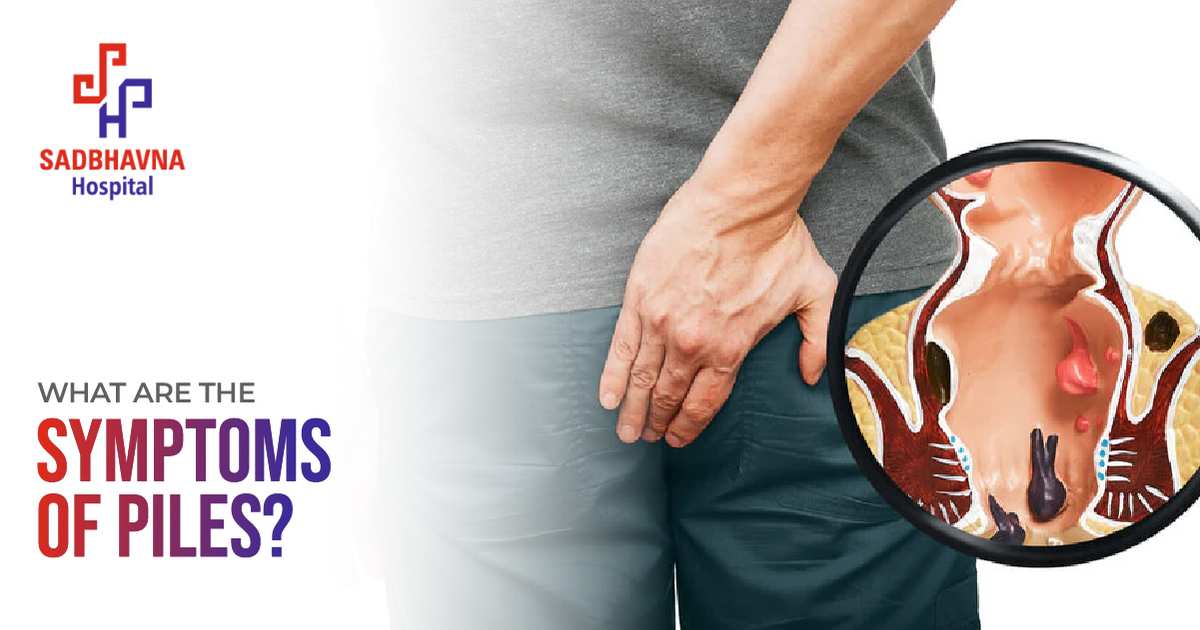Have you ever had that awkward moment when sitting feels like punishment, or you keep wondering why there’s a strange itch that just won’t quit? Well, you might just be dealing with piles (also known as haemorrhoids). It’s one of those topics that no one really wants to bring up at dinner, but let’s be honest, our bottoms deserve just as much attention as any other part of the body. So, visit Sadbhavna Hospital if you want the best Piles Treatment in Ahmedabad.
Now, let’s dive in and talk about all the symptoms of piles in a clear, straightforward way, and hopefully a little bit amusing.
What Exactly Are Piles?
Let’s take a quick look at what piles really are before we delve into the symptoms, though. Put simply, piles are when the blood vessels in your back passage become swollen, like varicose veins, but somewhere more delicate. They may be internal (inside the rectum) or external (outside of the anus), and symptoms will vary depending on the type.
The Common Signs You Shouldn’t Ignore
OK, let’s get down to details. Do you know what those symptoms are – itching, bleeding and pain? If that is what it feels like, then it can be piles? Here’s a list of the most common symptoms people notice when they have piles :
1. An itchy, burning sensation near the rectum
This is one of the early warning bells. That constant urge to scratch? Yup, it’s a classic. The aggravation is related to the swollen vessels rubbing or becoming irritated, and frankly, it can make you a little nuts.
2. Pain or discomfort while sitting
If you notice out of the blue that you hate sitting in hard chairs, it may not be the chair’s fault. Pain in the external piles occurs when you are sitting, and when the veins become inflamed or clots develop. It feels, some people say, like sitting on a pebble concealed in their jeans.
3. Bleeding during bowel movements
This one can be alarming. You might see some bright red blood on the toilet paper or in the toilet bowl after you wipe. It’s not always serious, but you can check to see if you have piles.
4. Lumps or swelling in the area of the anus
Ever experience a little bump or swelling near your bottom? That could be an external haemorrhoid. Sometimes it’s soft, other times it’s firm, depending on whether there is a clot within. Not really the type of surprise you would like to find in the shower, right?
5. Mucus discharge or leakage
This is the part no one wants to talk about, but it’s reality. Internal piles can also produce mucus, which may cause soiling of your underwear or make you feel as though your bowel is never empty. It may be uncomfortable and a little embarrassing, but this is another clear indication of piles.
6. Feeling of incomplete bowel movement
You go to the bathroom, finish up and you never really feel like anything has changed. That pesky feeling is yet another sign of internal piles.
When Should You Worry?
Piles are common and rarely dangerous, but that doesn’t mean they’re not to be taken seriously. If you are in extreme pain, bleeding heavily, or the lumps become too uncomfortable, then it is time to see a doctor. Keep in mind, piles are not the only cause of rectal bleeding; it could be another problem that requires proper treatment.
How Can You Manage It?
Yes, sometimes! Even though it may not seem so at first, there are easy-to-do lifestyle changes that can help, including drinking more water, eating foods rich in fibre, avoiding straining too hard when using the loo and exercising. Warm baths, also known as sitz baths, can also help soothe irritation and burning.
The Bottom Line
Piles are more common than you might think, and there’s no need to be embarrassed about them. The key is to spot the signals early. Whether you experience itching, bleeding or discomfort, understanding the signs of piles enables you to take action sooner rather than later.
So, if you’ve been quietly struggling with one of the problems we discussed, don’t dismiss it. Care for your body, visit Sadbhavna Hospital and talk to doctor, and remember, you’re not the only one dealing with this.






